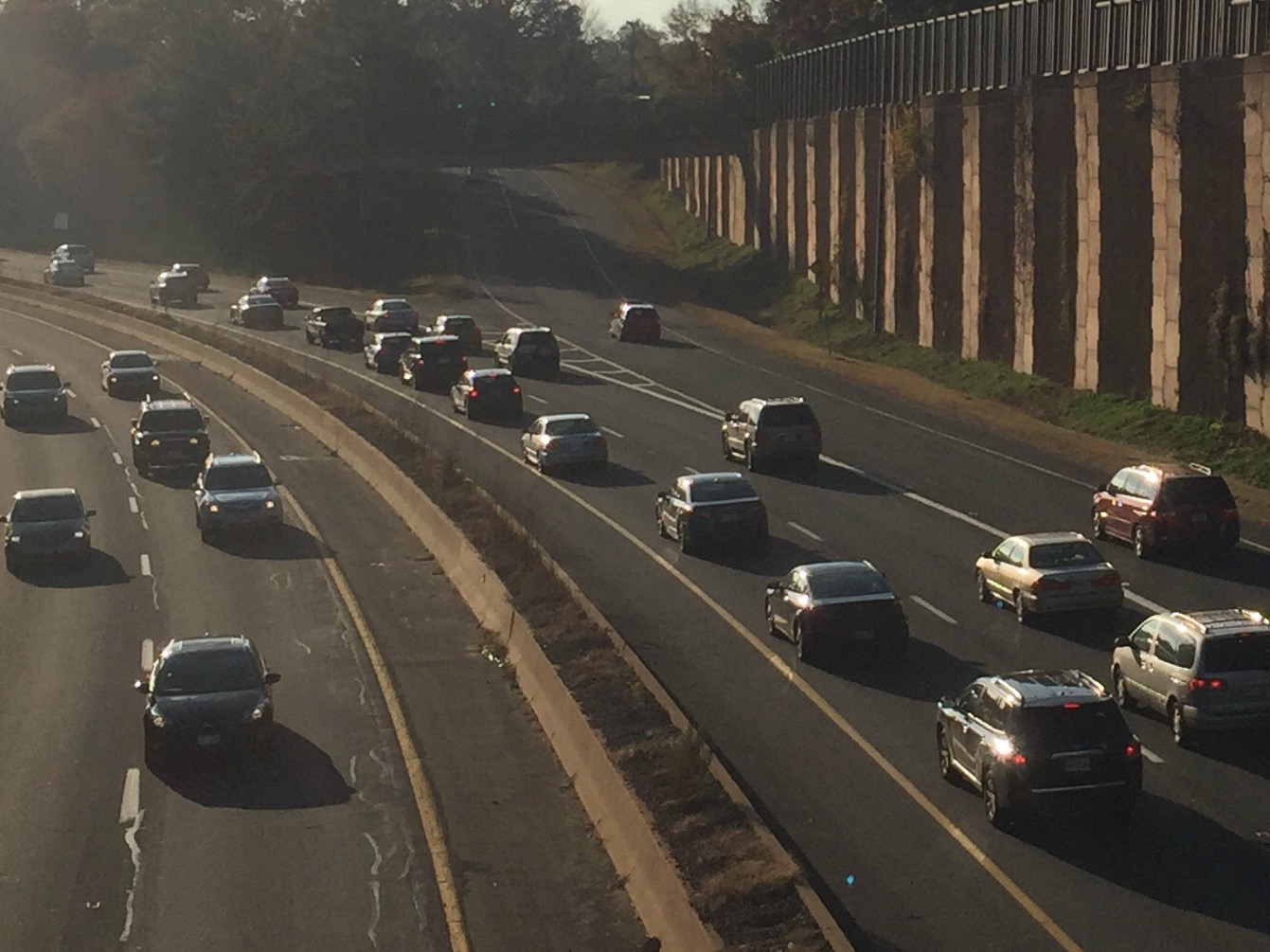WASHINGTON — Plans to add two new express lanes in each direction on Interstate 66 could be shaped by lessons from similar HOV or toll lanes elsewhere in the country, even if those lessons have yet to be learned fully.
In Miami, traffic sped up in the first years after a project that converted a single HOV lane to two toll lanes in each direction, like the proposal for I-66 between the Beltway and Gainesville.
A presentation by American Association of State Highway and Transportation Officials Policy Director Joung Lee says the travel time for express buses using the lanes dropped from 25 minutes to just eight, as average rush-hour speeds dramatically increased in both the regular lanes and the toll lanes.
Several thousand more riders are now using the buses each day.
“A lot of the riders really came because of the HOT lanes, institution of the tolls, and, again, the service improvements as well,” Lee said.
Virginia Transportation Secretary Aubrey Layne acknowledged at a Commonwealth Transportation Board meeting last month that transit improvements were largely missing from the 95 Express Lanes, which opened just over a year ago.
“Our HOT lanes have been successful, but one of the shortfalls is it has not developed the transit, the throughput that many had hoped for,” he said.
He promises transit will be a part of the I-66 plan.
“If you don’t include the others, then I think you really are just getting into allowing those people who have the means to pay go.”
But Lee, who largely touted the benefits of managed lanes, said evidence from other cities shows it is not just the richest drivers who use them.
A great example, he said, are those using day care pickup.
“If you’re going to be late [for pickup], and pay like [a] $50 penalty, but [instead] you pay $5 or whatever it may be to get there on time, that’s going to affect a lot more folks than I think just perhaps the most affluent of the general population,” he said.
Despite the accumulation of data, the technology allowing the variable tolls along with free rides for high-occupancy vehicles has not been around for that long, and lanes across the country are less than a decade old.
“Going forward, we are going to be able to gain more and more insight as more and more of these HOT lanes become established, more data is collected based on the usage and patterns and the like, and I think that can really continue to enhance and better inform a public policy debate such as the one you’re having with I-66,” Lee said.
In the Atlanta area, express lanes have faced significant issues. The lanes became so crowded that early last year the operators began offering toll credits to drivers willing to try out the buses in the corridor.
The program gives bus riders $2 per trip in credits, up to $10 per month.
In the Denver area, tolls cannot drop below the bus fare. In San Diego, the vast majority of money raised from the tolls goes directly to bus service in the corridor.
In the Minneapolis area, drivers apparently got more familiar with the rules over the first three years of the express lanes.
The number of cars in the lanes that did not have the transponder needed for an electronic toll dropped from 303 in the last three months of 2008 to 164 in the middle of 2011.
In Seattle, tolls were added to an HOV lane on SR-167 to allow solo drivers to use the lane that had extra capacity at rush hour.
After the tolls, speeds increased in the main lanes as some drivers moved to the HOV lanes.
As with all road projects, the longer-term impacts are not clear, since the improved speeds could draw more drivers to use the road, which would eventually bring speeds and traffic jams back to the original levels.
The American Association of State Highway and Transportation Officials represents the transportation departments of all 50 states plus the District and Puerto Rico.






